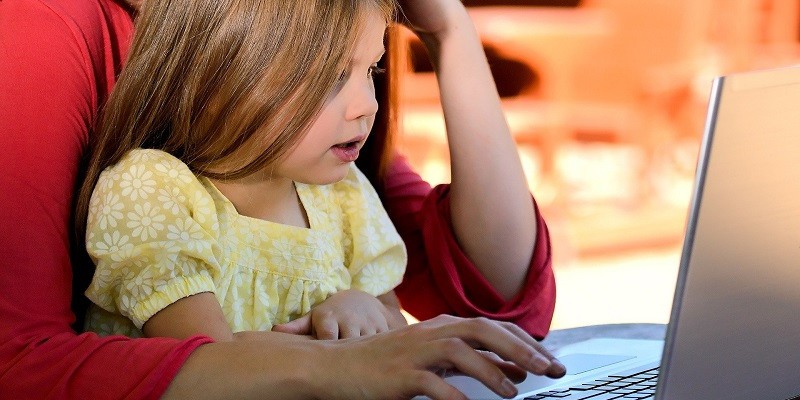7 Tips for Parents Whose Kids Are Learning Remotely

The COVID-19 outbreak has disrupted the lives of people around the world. Now, many parents must help their kids study at home as many governments require schools to educate children remotely to increase social distancing. Preparing for remote learning is challenging not only for teachers, but also for parents who must learn to work with various programs and systems. Naturally, with your hands full preparing for remote learning, it is easy to lose focus on cyber security issues. Unfortunately, now is not the time to let your guard down. Cybercriminals are aware that both parents and children will be spending much more time online, so they will be waiting for families to make careless mistakes. Therefore, in this blog post, we want to help parents to take care of their families’ cyber security by providing security tips for learning remotely.
Remote learning may require installing new tools, connecting to various systems, as well as spending lots of time while surfing the Internet. If a person is not careful enough, performing the mentioned activities could result in him downloading malicious applications, exposing his private or sensitive information, falling for scams, and similar mistakes. To help you avoid such mistakes and protect your child, we prepared security tips for learning remotely that you can see below.
Table of Contents
1. Talk with your kids about information sharing
One of the first things you should do when preparing your kid for remote learning is have a talk with him about information sharing. To be more precise, specialists recommend explaining what data is sensitive or private and under what circumstances it should never be shared. For example, sensitive data could be login credentials, while personal information could be birth dates of your family members.
Generally, it is advisable not to share sensitive or personal data with anyone you do not know or trust. Cybercriminals often try to scare their victims into giving up the information that they are interested in. Consequently, it is vital to explain to your kids that they do not have to provide any data to strangers and should ask for your help or permission if they are ever in doubt. Also, we highly recommend talking about phishing scams so that they would not interact with phishing emails, websites, and notifications.
2. Make sure that everything is up to date
Before you get what might be required for remote learning, it is advisable to check if your kid’s computer’s operating system as well as the software installed on it is up to date. Outdated programs can have various weaknesses that hackers might be able to exploit to infect a computer with malware, steal information available on it, or infect other devices connected to it. Thus, it is not just about having the latest features. If you have the newest version, it is less likely that your program will have exploitable vulnerabilities, which could put your computer at risk. Also, it is vital to mention that it best to let the operating system and other programs download and install updates automatically. Of course, you could find and install the needed updates yourself, but you could also end up on malicious websites, which might offer fake updates.
3. Use a reputable antimalware tool
The computer dedicated to remote learning should also have a legitimate antimalware tool that could guard it against various threats. A reliable security tool can alert your kid when he is about to interact with malicious content and so make it easier for him to recognize and avoid threats. Naturally, we advise picking a tool that comes from reputable developers and that could serve your family’s needs the best. For instance, if you also want to shield your children from age-inappropriate content that can be easily stumbled upon while browsing, you should pick an antimalware tool that offers parental control tools.
4. Help them set up their virtual learning environment
Once you are sure that your kid knows how to stay safe on the Internet and that his computer is clean and protected, it is time to help him get what he needs for remote learning. Your child’s school should provide a list of applications and systems that he might need to install or connect to. If the list comes with URL addresses of websites that ought to provide the needed applications or access to systems, it is best to type the given links directly into the address bar. Finding the needed websites by typing their names into search engines could result in going to fake web pages setup by cybercriminals who are aware about the increased usage of tools that can be used for remote learning or teaching. Consequently, we advise to stick to tools that your child’s school approves and make sure that you get them from legitimate sources.
5. Make sure that your kids use strong passwords
Naturally, the usage of various tools for remote learning might require creating new accounts that must be secured to protect your children. To start with, we recommend helping your kids create strong passwords that could be difficult to guess or crack. Cybersecurity experts advise using at least 12 characters that should include both lower-case and upper-case letters, numbers, and special symbols to make a strong password. Creating such combinations as well as remembering them could be difficult not only for children but also for parents. Luckily, there are applications like password managers that can create secure passwords and memorize them for you. For example, Cyclonis Password Manager offers a password generator that creates combinations from chosen characters. Also, it offers a feature called Private Notes that can be used to save passwords of your smart home devices or any other sensitive information.
6. Encourage your children to use more safety measures
As mentioned earlier, hackers are now more active then ever as all social-distancing measures, including remote learning, are making all of us spend much more time in front of our computers. Therefore, if you or your kids never bothered to use safety precautions like Two-Factor authentication, now is the time to do so.
Two-Factor authentication or 2FA can protect accounts even if hackers gain the needed login credentials. As you see, an account protected with 2FA can only be accessed with a second factor, for example, a unique code sent to the account’s owner’s mobile phone. If possible, we recommend enabling 2FA not only on tools and systems needed for your kids remote learning but also on their social media profiles and other accounts. Access to one account could endanger all other profiles, so it is best to secure them all. Also, we advise looking into other safety features like monitoring login attempts from unknown devices or locations.
7. Keep up with the latest cyber security news
Getting tons of information about cyber security at once can be overwhelming. Plus, cyber security tips are constantly renewing as new cyber threats arise all the time. Therefore, it is best to read about cyber threats and security tips regularly. If you are a parent, it is vital to share what you learn with your children so that they would know how to protect themselves from cyber attacks when you are not around.
All in all, there are quite a few things that you need to do if you want your children to be safe while they are studying at home. Besides using our provided security tips for learning remotely, we highly recommend monitoring your kids regularly to see if they are not visiting any harmful websites or have not installed any malicious applications. You can do this yourself by checking your child’s computer from time to time or you could use various parental supervision tools. If you do these things, we have no doubt that your kids will be safe not only when they learn remotely but also when they play computer games or chat with their friends.








